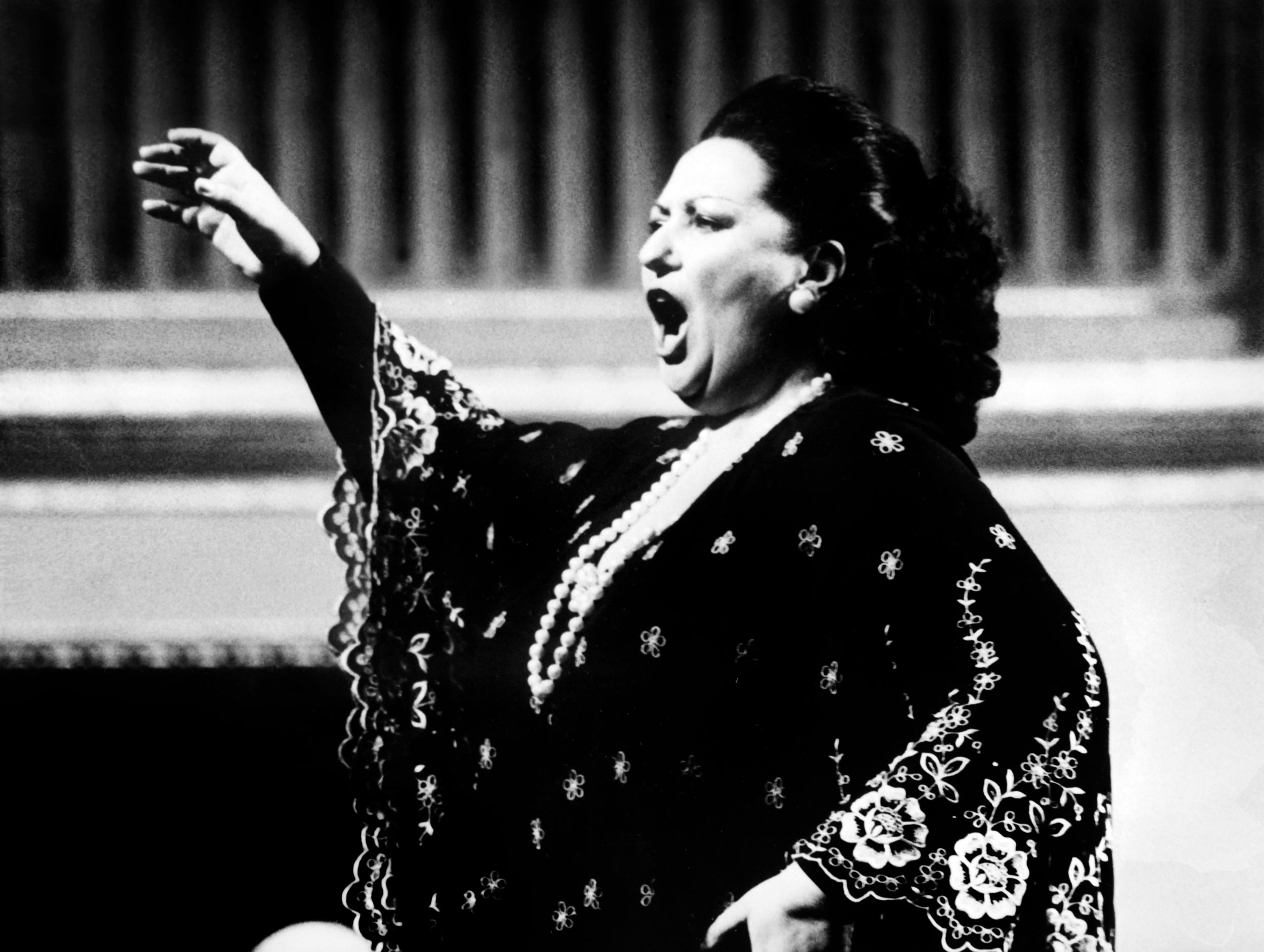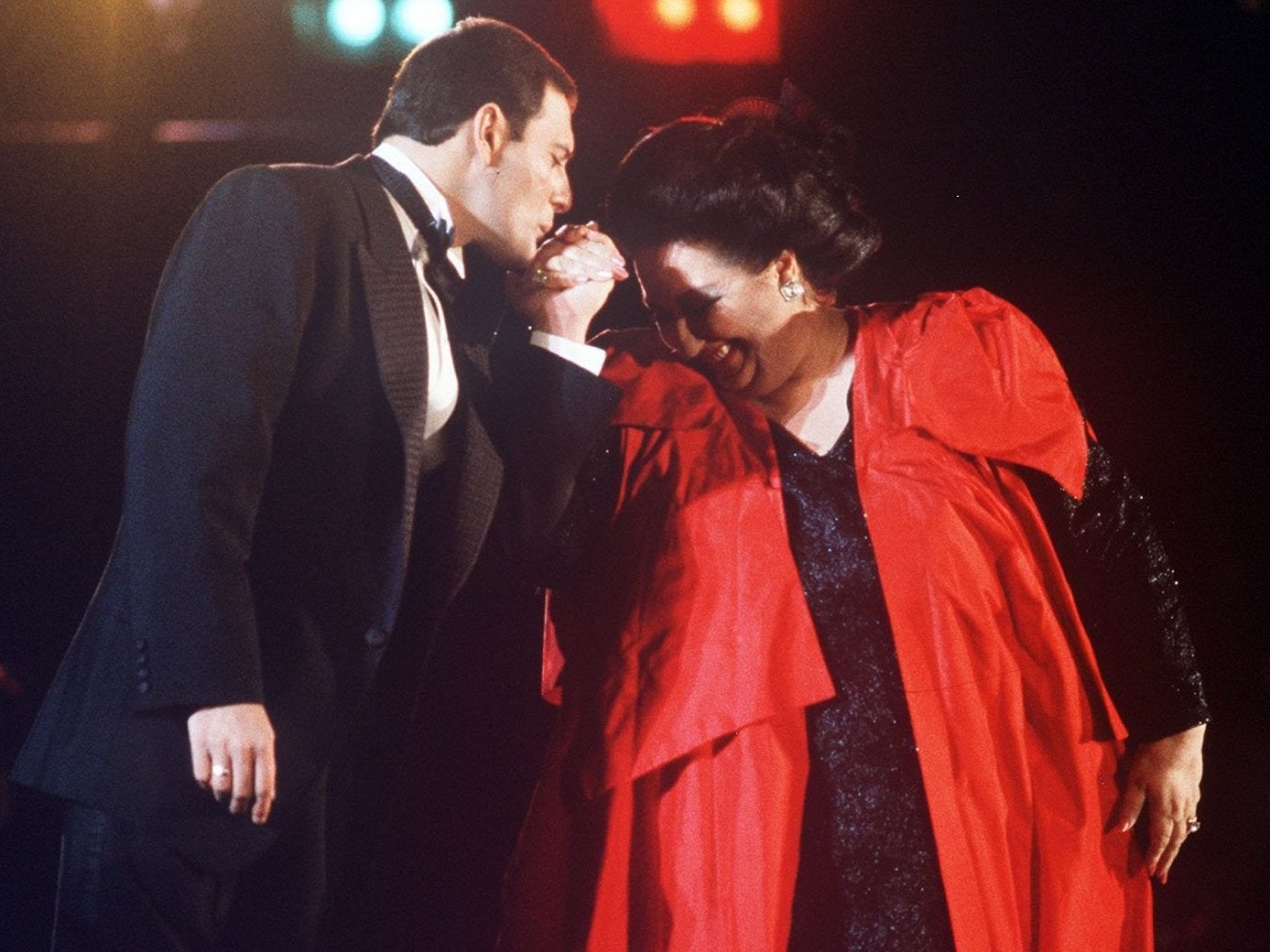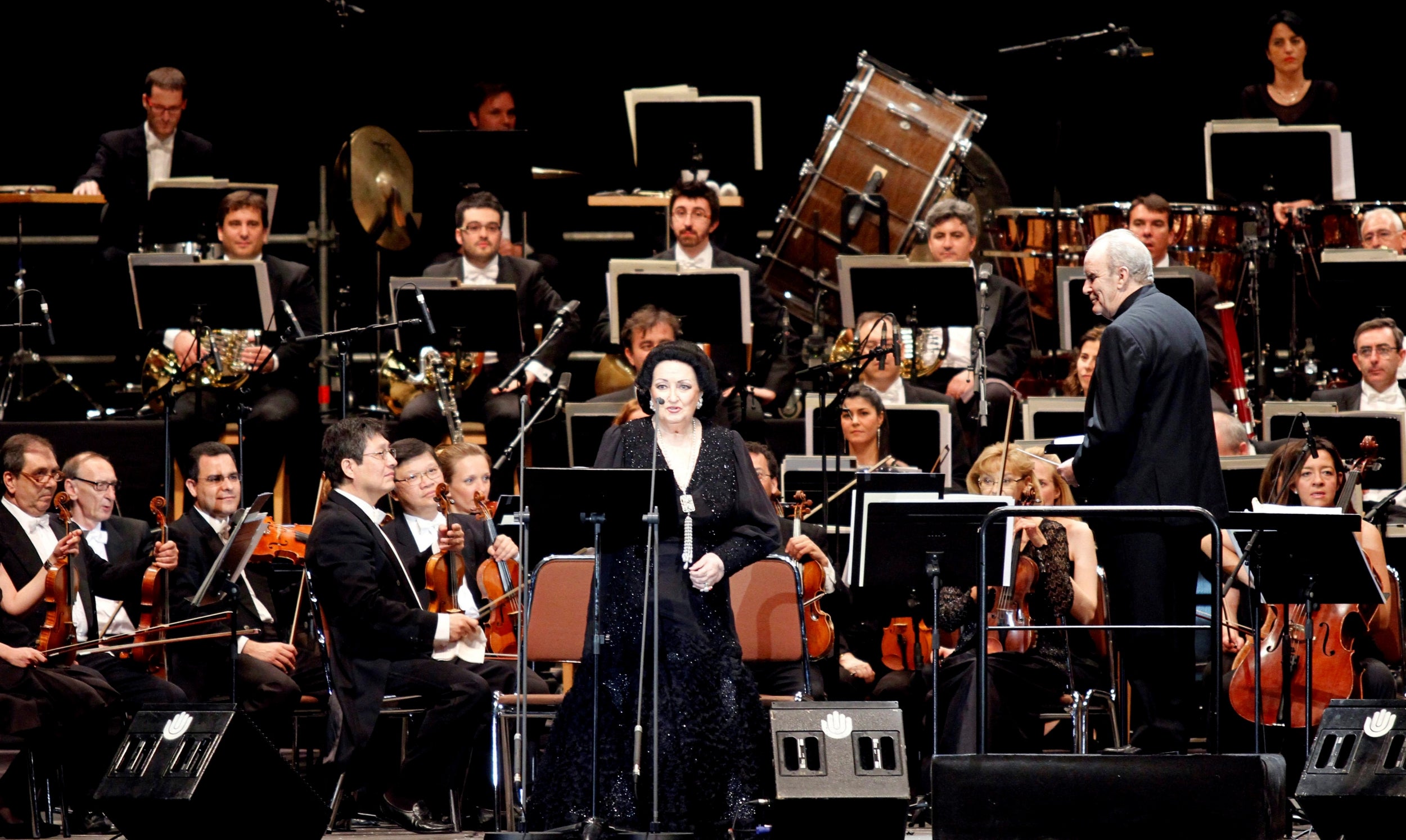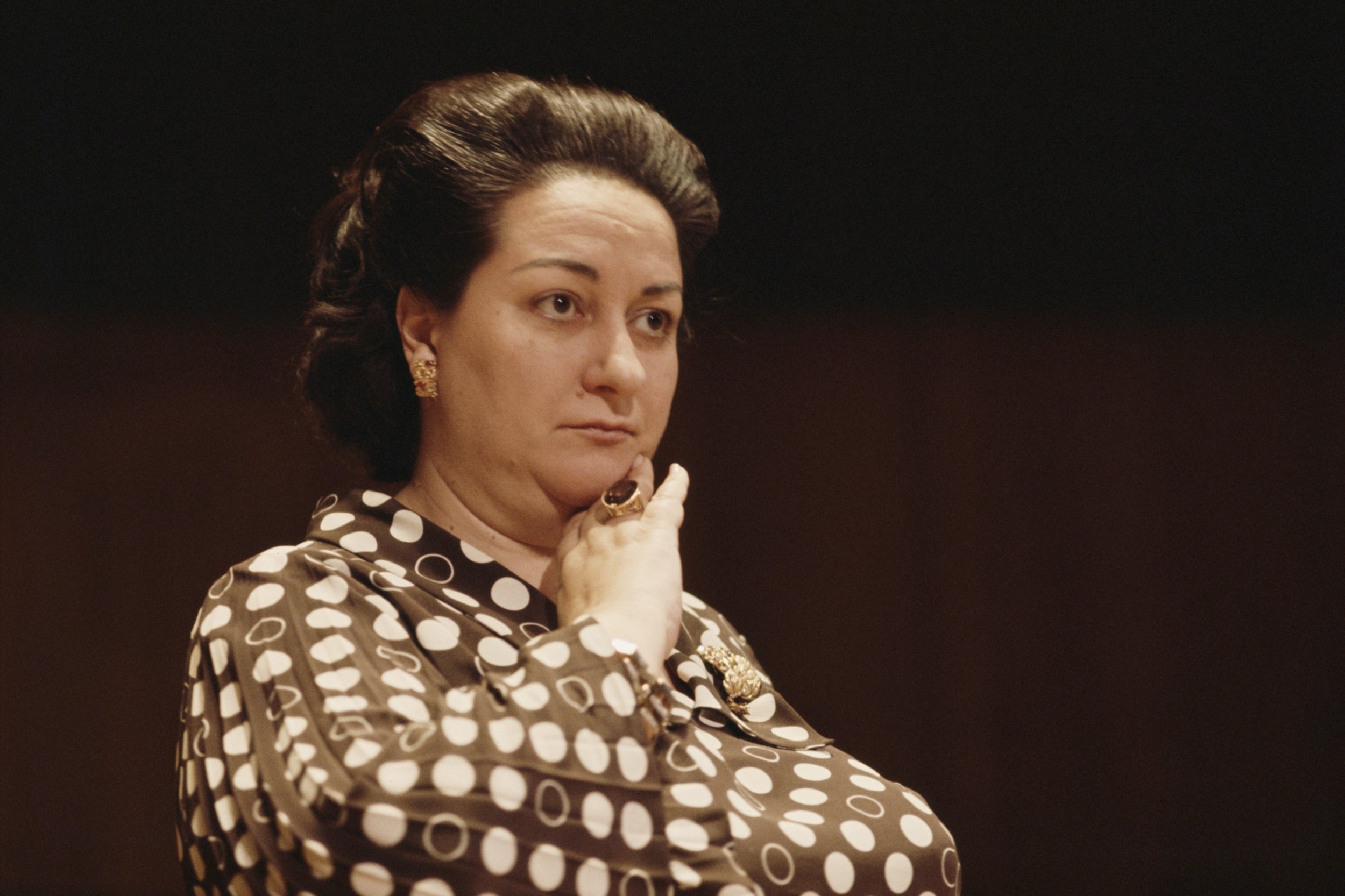Montserrat Caballé: Much-loved opera singer who became a pop sensation duetting with Freddie Mercury
In a career stretching back to the 1950s, she recorded more than 80 albums and gave thousands of performances

Your support helps us to tell the story
From reproductive rights to climate change to Big Tech, The Independent is on the ground when the story is developing. Whether it's investigating the financials of Elon Musk's pro-Trump PAC or producing our latest documentary, 'The A Word', which shines a light on the American women fighting for reproductive rights, we know how important it is to parse out the facts from the messaging.
At such a critical moment in US history, we need reporters on the ground. Your donation allows us to keep sending journalists to speak to both sides of the story.
The Independent is trusted by Americans across the entire political spectrum. And unlike many other quality news outlets, we choose not to lock Americans out of our reporting and analysis with paywalls. We believe quality journalism should be available to everyone, paid for by those who can afford it.
Your support makes all the difference.Montserrat Caballé, the Spanish soprano who has died aged 85, was hailed as one of the greatest opera singers of the 20th century. She was known for the purity and subtlety of her voice during a career lasting six decades.
Caballé, who was known as “La Superba”, was often considered the greatest soprano since Maria Callas. A prima donna in every sense of the term, she embodied what it meant to be an opera star: she was temperamental, theatrical, imperious and, above all, deeply musical.
She developed a loyal following that hung on every note, overlooking her sometimes botched lyrics to marvel at the velvety richness and tonal colours of her voice. Even when she cancelled performances without warning, she was forgiven because of the strength and shimmering beauty of her singing.
She negotiated complicated vocal passages with ease, held notes for 20 seconds and had the ability to heighten the emotional meaning of an aria by singing pianissimo – or very quiet – high notes with utter confidence and clarity.
“The voice is quite hauntingly beautiful, with a darkly burnished tone almost like that of a viola,” New York Times critic Raymond Ericson wrote in 1965.

Beginning in the 1950s, Caballé gave thousands of performances and made more than 80 recordings – famously including one in the 1980s with Freddie Mercury. She had an immense repertoire, performing leading operatic roles in several languages.
Caballé was at ease with the 18th century music of Handel and Mozart; the German operas of Richard Wagner and Richard Strauss; and 20th century works by Stravinsky, Prokofiev and Berg. She was best-known, however, for her lyrical singing in the 19th century Italian bel canto tradition, including works by such composers as Bellini, Donizetti and Puccini.
After a decade of performing in Europe and Mexico, Caballé made her US debut on 20 April 1965, substituting for Marilyn Horne in a concert performance of Donizetti’s Lucrezia Borgia.

“When Caballé began her first aria, there was a perceptible change in the atmosphere,” critic John Gruen wrote in the New York Herald Tribune. “It seemed for a moment that everyone had stopped breathing.”
The audience interrupted the performance for five minutes of sustained applause.
She became a regular at New York’s Metropolitan Opera and other leading opera houses and concert halls around the world. A 1965 Newsweek review of the Donizetti opera “Roberto Devereux” noted “her fiery temperament so dominated the stage that the other able singers seemed made of papier-mache.”

Caballé took on most of the leading roles for sopranos, including Puccini’s Tosca, Mimi in Puccini’s La Boheme, Violetta in Verdi’s La Traviata and her favourite, Richard Strauss’s Salome. She stayed in excellent vocal form well into her fifties and beyond, despite her habit – somewhat shocking for a singer – of smoking more than a pack of cigarettes a day at the height of her career.
“You see, God has blessed me – I don’t know how else to say it – with a beautiful sound,” she said in 1973. “I try in roles like Salome to sing earthily, but it comes out as sweet-earthy. You know, it’s like when someone has a beautiful face, you can do what you want to it, but it’s still beautiful.”
In concerts and recitals, Caballé broadened her repertoire to include Spanish songs, obscure operatic arias and occasionally duets with other singers, including her husband, tenor Bernabé Martí.
One of her most unlikely singing partners was Mercury, the flamboyant lead vocalist of Queen who idolised Caballé and often attended her performances. Their 1988 album Barcelona hit the pop charts before Mercury’s death in 1991.
For years afterward, Caballé wore a red ribbon during her concerts to show her support for Aids research.
Maria de Montserrat Viviana Concepción Caballé i Folch was born in 1933 in Barcelona. Her father was trained as a chemist, but after the Spanish Civil War the once-prosperous family struggled and lived in near poverty. One year, Caballé wore the same dress to school every day.

Her parents were music lovers, and she attended her first opera – Puccini’s Madame Butterfly – when she was four. “And from that moment on I wanted to study music,” she said.
She began her music training in earnest aged eight, but financial struggles interrupted her studies until a wealthy family helped pay her tuition at a conservatory in Barcelona. Upon her graduation in 1954, she won first prize in a vocal competition.
In 1957, Caballé appeared in her first opera, La Boheme, in Basel, Switzerland, where she was based for three years. She then joined an opera company in Bremen, Germany, where – in a single week – she was in five wildly different operas: Bedrich Smetana’s The Bartered Bride, La Traviata, Tosca, Salome and Die Fledermaus by Johann Strauss II.
She met Martí while both were in a production of Madame Butterfly, and they were married in 1964. In addition to her husband, survivors include two children.
Caballé, who had homes in Spain and Austria, was convicted of tax fraud in Spain in 2015 and given a suspended sentence after claiming to live in the European tax haven of Andorra. Although she had hinted at retirement since the 1970s, she performed until as recently as 2016.
“Afterwards, you go into your room in the hotel and maybe there is no one there,” she said in 1992. “You lie on your bed and you think a little and it is a feeling of having put all your strength and all your senses into it.
“It is the sensation of being tired but having a good feeling, you know, a sensation that you have done it honestly and given all your strength. And it is no matter that you feel like this, because this is what you have to do when you go into this sort of life. This is what I choose.
Montserrat Caballé, born 12 April 1933, died 6 October 2018
© Washington Post
Join our commenting forum
Join thought-provoking conversations, follow other Independent readers and see their replies
Comments